Introduction
In the ever-evolving digital landscape, the artistry of web page design and the precision of website design and development converge to create more than just visually appealing online spaces; they forge the very backbone of a successful digital presence. This harmonious blend of design and development is not merely about aesthetics; it's a strategic alignment that propels web success, transforming ordinary sites into powerful tools of engagement, conversion, and user satisfaction.

At the heart of this synergy lies the profound importance of design in the digital realm. Design transcends mere colours and shapes; it is the thoughtful curation of user experiences, guiding each click and interaction towards a journey that is both intuitive and rewarding. In a world where users' attention spans are fleeting, the role of design becomes paramount, shaping the initial impression and dictating the longevity of user engagement on a website.
But what makes this combination truly remarkable is its capacity to merge form with function seamlessly. The collaboration between designers and developers is akin to a dance, where each step and movement is synchronized to create a performance that captivates the audience. Here, designers are not just artists but architects of the digital experience, employing principles of usability, accessibility, and responsiveness to craft interfaces that not only look beautiful but perform flawlessly across all devices and platforms.
The fusion of web page design and website design and development is, therefore, not just a requirement for digital success; it's a potent strategy that leverages the strengths of both disciplines. By integrating aesthetic appeal with functional excellence, websites can achieve their full potential, turning visitors into loyal users and customers. This strategic synergy is the secret weapon in the digital marketer's arsenal, ensuring that every element, from layout to typography, works together to support the site's goals and user needs.
Understanding Web Page Design and Website Development
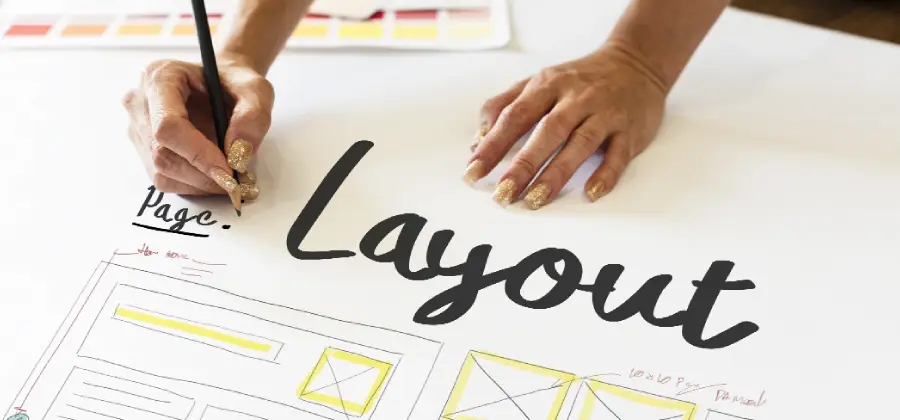
Delving into the digital domain, the concepts of web page design and website design and development stand as pivotal elements that shape the essence and functionality of the online world. At their core, these disciplines serve distinct, yet interlinked purposes, each contributing to the creation of comprehensive and captivating digital experiences.
Web page design focuses on the aesthetic aspects and user experience of a website. It's the process through which designers conceptualize and plan out the visual elements of a website, including layout, colour schemes, typography, and imagery. This realm is where artistry meets innovation, aiming to not only catch the eye of the visitor but to guide them through a seamless journey across the digital landscape. The goal is to craft pages that are not only visually appealing but also intuitively navigable, ensuring that users find both pleasure and ease in their interaction with the content.
On the flip side, website design and development encompasses the comprehensive process of building a website, from the ground up. This includes web page design but extends into the realm of coding and development, where the visual concepts are transformed into a fully functional website. It's here that developers take the baton, turning design prototypes into responsive, operational websites using languages like HTML, CSS, and JavaScript. This phase is critical, as it brings to life the designer's vision, ensuring that the website operates flawlessly on various devices and platforms, catering to the needs of a diverse audience.
The integral role of design within this process cannot be overstated. It's the glue that binds the visual appeal with functional prowess, ensuring that websites are not just easy on the eyes but also user-friendly and engaging. In today’s fast-paced digital era, the user experience is king. Websites designed with the user in mind, incorporating responsive layouts, intuitive navigation, and interactive elements, are the ones that stand out in the crowded online space. They not only attract visitors but convert them into loyal users and advocates, driving the website’s success.
The Designer’s Role in Your Team
In the realm of web page design and website design and development, the role of a designer transcends the traditional boundaries of mere aesthetics. A designer is not just an artist who embellishes a webpage with visual delights; they are the architects of the user's digital journey, holding the compass that guides the user experience (UX) from bland to brilliant. Their responsibilities form the bedrock upon which engaging, functional, and accessible websites are built.
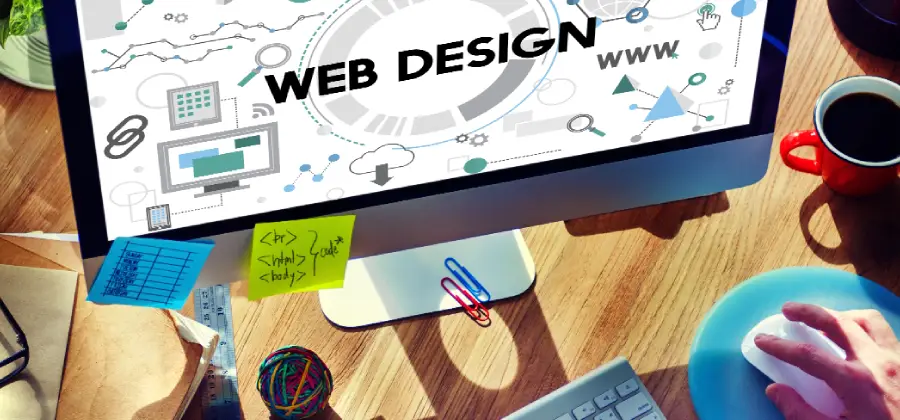
The Multifaceted Responsibilities of a Designer
A designer's toolkit is brimming with skills that blend creativity with technology. Beyond selecting the right colour palettes and typography, they delve deep into understanding the psyche of the target audience and crafting designs that resonate on a personal level. They wield the power of visual communication to not just capture attention but to sustain engagement, turning visitors into active participants in the digital narrative being told.
However, their role is not confined to the visual. Designers are tasked with ensuring that every element on the webpage serves a purpose. From the layout to the navigation, every component must be meticulously planned to ensure the website is as intuitive as it is beautiful. This requires a deep understanding of web page design principles and a keen eye for detail to optimize each element for maximum usability and accessibility.
Beyond Aesthetics: Usability, Functionality, and User Experience
Designers are the champions of the user experience, constantly asking, "Is this website easy to use? Is the information architecture logical? Are the call-to-actions clear?" They are pivotal in transforming static designs into dynamic, user-centric experiences that are not only visually appealing but also highly functional.
Their expertise in user interface (UI) design ensures that a website is not just navigable but enjoyable to explore. By focusing on the usability and functionality of each element, designers contribute to the development of websites that perform seamlessly across all devices and platforms, thereby enhancing the overall user experience. This holistic approach to website design and development is what sets apart great websites from good ones.
The integration of UX principles into the design process highlights the designer's role in problem-solving and innovation. They anticipate user needs and address them before they become barriers to engagement, making every interaction with the website intuitive and meaningful. By prioritizing the user's journey, designers ensure that the website not only meets but exceeds user expectations, fostering a positive relationship between the brand and its audience.
Case Studies: Transformative Power of Design in Development

In the intricate tapestry of web page design and website design and development, the transformative power of design is not merely anecdotal; it is quantifiable, rooted in real-world success stories that underscore the pivotal role design plays in enhancing website performance. Through a lens of meticulously chosen case studies, we uncover the measurable impact that thoughtful design can have on a website's success, spotlighting the metrics of user engagement, conversion rates, and bounce rates as key indicators of this influence.
Case Study 1: The E-commerce Evolution
The first beacon of our exploration is an e-commerce platform that underwent a comprehensive design overhaul. Initially plagued by cluttered layouts and confusing navigation, the website struggled to convert visits into sales, with a discouraging bounce rate of 58%. The intervention was holistic, focusing on simplifying the user interface, streamlining the checkout process, and incorporating engaging, high-quality visuals that mirrored the brand’s ethos.
Post-redesign, the results were staggering. The website witnessed a 40% increase in user engagement, a 35% uptick in conversion rates, and a significant drop in bounce rates to 29%. This case vividly illustrates how enhancing usability and visual appeal can directly contribute to business objectives, turning passive browsers into active buyers.
Case Study 2: A Portal to Enhanced User Experience
Our second case study centres on an informational portal designed to disseminate educational content. Initially, the site suffered from low user engagement, with average session durations falling short of the one-minute mark. The content, albeit valuable, was buried under a convoluted navigation scheme, and the antiquated design did little to capture the user's attention.
The redesign strategy was twofold: to elevate the aesthetics, making the site more visually inviting, and to restructure the content hierarchy for easier access. Post-launch metrics painted a picture of success, with average session durations doubling and a 50% increase in page views per session. These metrics underscored the critical role of design in not just attracting users, but in holding their attention and encouraging deeper exploration of the site.
Case Study 3: SaaS Platform’s Leap Towards Lower Bounce Rates
The final case study shines a spotlight on a Software as a Service (SaaS) platform that grappled with high bounce rates of 70%, a clear indicator that many visitors were not finding what they were looking for upon landing on the site. The design intervention focused on clarifying the value proposition on the homepage, optimizing load times, and implementing a responsive design to improve accessibility across devices.
The aftermath of these design improvements was profound, with bounce rates plummeting to 45% and a 25% increase in sign-ups for the free trial. This case underscores the importance of clear communication through design and the necessity of optimizing the user experience across all touchpoints.
Expertise in Action: What Makes a Designer Indispensable?

In the realm of web page design and website design and development, designers are far more than the artisans of the internet; they are the pivotal forces that bridge the gap between a user's desire and a developer's logic. The indispensability of a designer in a development team stems not only from their adeptness at crafting visually compelling interfaces but also from their unique blend of qualifications, skills, and a design-centric approach to problem-solving that fosters innovation at every turn.
The Core Qualifications and Skills of a Designer
An adept designer brings to the table a versatile skill set that extends beyond mastery of design tools and technologies. Their educational background often encompasses fields such as graphic design, visual communications, and sometimes, human-computer interaction, providing them with a solid foundation in the principles of design. However, their learning doesn't cease with graduation; continuous education through workshops, online courses, and staying abreast of the latest design trends ensures their expertise remains relevant and impactful.
Technical prowess in design software (Adobe Creative Suite, Sketch, Figma, etc.) is a given, but it's their understanding of user interface (UI) and user experience (UX) principles that truly sets them apart. Designers proficient in website design and development are also versed in the basics of HTML, CSS, and JavaScript, enabling a seamless dialogue with developers and ensuring designs are both beautiful and technically feasible.
The Power of a Design Mindset
Beyond technical skills, what renders a designer indispensable is their design mindset - an innate ability to see the world through the lens of design thinking. This approach involves empathy with the user, creative ideation, iterative prototyping, and continuous testing, all aimed at solving problems in innovative ways. A design mindset doesn’t just look to address the symptoms of a problem but dives deep to understand its root cause, ensuring solutions are both effective and forward-thinking.
This design-driven problem-solving extends its influence beyond aesthetics, impacting how teams approach challenges, conceptualize new features, and optimize user flows. It encourages a culture of experimentation and feedback, where every failure is seen as a stepping stone to innovation. In this way, designers contribute significantly to creating products that are not just usable and functional but truly delightful to interact with.
In the dynamic field of web page design and website design and development, the indispensability of a designer lies not just in their ability to create visually stunning web pages but in their holistic approach to design as a problem-solving tool. Their qualifications and skills ensure that every design decision enhances the user's interaction with the website, making every visit a memorable experience. Meanwhile, their design mindset pushes the boundaries of what's possible, driving innovation that keeps websites at the cutting edge of technology and user satisfaction. In essence, designers are the indispensable alchemists of the digital age, turning ordinary user interfaces into extraordinary experiences.
Integrating Design and Development: Best Practices

In the intricately connected world of web page design and website design and development, the seamless integration of design and development practices stands as a cornerstone for crafting websites that are not only aesthetically pleasing but functionally robust. Bridging the gap between designers and developers is crucial for the timely and successful execution of projects. Below, we explore best practices and collaborative approaches that ensure synergy between these two pivotal roles, highlighting strategies that leverage their unique strengths and perspectives.
Fostering Open Communication and Collaboration
The foundation of seamless integration lies in open, ongoing communication between designers and developers. Regular meetings and collaborative sessions should be the norm, not the exception. Utilizing tools like Slack for instant messaging, Trello for task management, and Figma for real-time design collaboration can help maintain a constant dialogue. Encouraging an environment where questions, feedback, and ideas are freely exchanged enhances understanding and minimizes the potential for misalignment in project goals.
Unified Vision and Goals
Before diving into the specifics of a project, both designers and developers must align on the vision, objectives, and key performance indicators (KPIs) of the website. Establishing a shared understanding of the project's end goals ensures that every decision made, from the design phase to development, contributes towards these objectives. This alignment is critical for maintaining focus and ensuring that both aesthetics and functionality serve the website’s broader strategy.
Adopting an Agile Methodology
Implementing agile methodologies in web page design and website design and development projects promotes flexibility, adaptability, and responsiveness to change. By breaking down projects into smaller, manageable sprints with specific deliverables, both designers and developers can work in tandem, iteratively improving the product. Regular sprint reviews and retrospectives facilitate a culture of continuous feedback and improvement, allowing for adjustments to be made efficiently and effectively.
Cross-Disciplinary Education
Promoting a culture of cross-disciplinary education fosters empathy and understanding between designers and developers. Encouraging designers to learn the basics of HTML, CSS, and JavaScript, and developers to grasp fundamental design principles can bridge the knowledge gap between the two disciplines. This mutual understanding facilitates smoother transitions from design to development, as both parties can anticipate and plan for potential challenges.
Design Systems and Style Guides
Creating comprehensive design systems and style guides is a best practice that benefits both designers and developers. These resources provide a unified language and set of standards for the design and implementation of web components. By having a shared reference point, developers can ensure fidelity to the original design, while designers can design with an understanding of what is feasible in development. This not only streamlines the workflow but also ensures consistency and cohesiveness across the website.
Prototype and Test Early
Prototyping and early testing are crucial for identifying usability issues, technical challenges, and opportunities for improvement. Tools that allow for high-fidelity prototyping can help visualize interactions and user flows, providing both designers and developers with a clearer picture of the end product. Early user testing, whether through usability studies or A/B testing, provides valuable feedback that can guide adjustments before significant resources are invested in full-scale development.
The User’s Journey: Designing with Intent
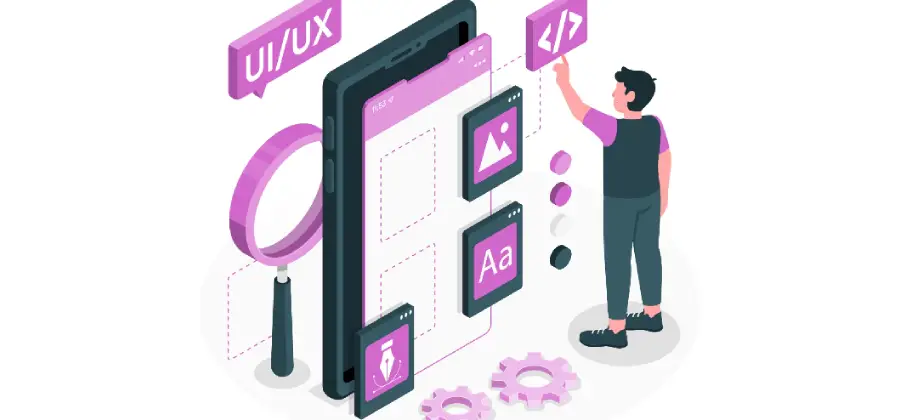
In the dynamic landscape of web page design and website design and development, crafting a user's journey with intent is paramount to achieving a site that not only attracts visitors but also effectively guides them towards desired actions and outcomes. This strategic approach to design considers every element of the user's interaction with the website, ensuring a seamless, intuitive, and rewarding experience. Here, we delve into the design principles that prioritize user experience (UX) and site navigability, alongside strategies for using design to influence user pathways.
Empathy in Design: Understanding the User
At the core of user-centric design lies a profound empathy for the user. This empathy informs a deep understanding of the user's needs, preferences, and challenges, enabling designers to craft experiences that resonate on a personal level. Implementing user personas and journey maps as tools can help designers visualize the various pathways a user might take, identifying potential friction points and opportunities to enhance engagement.
Clarity and Consistency: The Pillars of Navigability
For a website to be truly navigable, it must embody clarity and consistency across its design elements. This means employing a logical structure that users can intuitively follow, with clearly labelled sections and a predictable layout. Consistency in the use of colours, fonts, and interactive elements further reinforces familiarity, making the user's journey through the site smooth and straightforward. Such cohesiveness ensures that users spend less time deciphering the layout and more time engaging with the content.
Accessibility: Designing for All
An inclusive web page design approach ensures that websites are accessible to users of all abilities, including those with disabilities. This involves adhering to Web Content Accessibility Guidelines (WCAG) by incorporating features like keyboard navigation, screen reader compatibility, and alternative text for images. By prioritizing accessibility, designers not only broaden the reach of the website but also champion a more inclusive digital world.
Intuitive Call to Actions (CTAs)
Design plays a critical role in guiding users towards desired actions, whether it's making a purchase, signing up for a newsletter, or contacting customer support. Effective CTAs are visually distinct, offering clear value propositions that resonate with the user's needs and interests. Placement is key; CTAs should be positioned in areas of high engagement, such as near compelling content or after an informative section, to capitalize on the user's interest.
Feedback and Interaction
Interactive design elements that provide immediate feedback, such as hover effects on buttons or real-time form validation, enhance the user's sense of control and engagement. These subtle cues affirm the user's actions, making the journey through the site more satisfying and productive.
Optimizing for Performance
A website's loading time and responsiveness are critical to user experience. High-performance websites that load quickly and operate smoothly across devices keep users engaged and reduce bounce rates. Design decisions, from image sizes to animation complexity, should be made with performance in mind, ensuring that aesthetics never compromise the site's speed and functionality.
Impactful Web Design: Beyond the Surface

In the multifaceted discipline of website design and development, the power of impactful design extends far beyond surface aesthetics. It delves into the strategic implementation of semantic elements and Latent Semantic Indexing (LSI) keywords, alongside a steadfast commitment to accessibility and responsive design. These components are not merely add-ons but are integral to crafting websites that stand the test of time and technology, ensuring they resonate with both users and search engines alike.
Semantic Elements: Speaking the Language of SEO
In the world of web development, semantic HTML elements play a crucial role in communicating the structure and purpose of content to search engines. By using tags like <header>, <footer>, <nav>, and <article>, designers and developers can delineate the content more clearly, making it easier for search engines to parse and index the site's information accurately. This precision not only aids in SEO but enhances the site's overall usability and accessibility, contributing to a more organized and navigable web experience.
Incorporating LSI keywords into the fabric of web design further amplifies a website's SEO efforts. LSI keywords are terms and phrases related to the primary keywords for which a site aims to rank. Integrating these into the site's content, meta tags, and even in the alt text of images, enriches the site's context for search engines, improving its visibility and ranking for a broader range of search queries. This approach ensures that the design is not just visually appealing but is also finely tuned for optimal search engine performance.
Accessibility: Designing for All
Accessibility in web design is not a trend but a fundamental principle that underscores the ethos of modern web development. Designing for accessibility means creating web experiences that are usable for people with a wide range of abilities, including those with visual, auditory, motor, or cognitive impairments. This commitment to inclusivity not only broadens the reach of a website but also reflects a brand's dedication to serving all segments of the community.
The accessible design incorporates features such as text-to-speech compatibility, keyboard navigation, and sufficient colour contrast, among others. Adhering to the Web Content Accessibility Guidelines (WCAG) ensures that web designs meet the necessary standards, making the digital world more inclusive. Moreover, accessibility practices overlap significantly with SEO-friendly design principles, such as clear navigation and structured content, further enhancing a site's performance in search engine results.
Responsive Design: Adapting to the User's World
In today's digital landscape, where users access the internet from a myriad of devices with varying screen sizes, responsive design has become a cornerstone of web development. A responsive website dynamically adjusts its layout and content to fit the screen on which it's being viewed, ensuring an optimal user experience across all devices. This adaptability not only improves usability but also contributes positively to SEO, as search engines favour websites that cater to mobile users.
Implementing responsive design involves fluid grids, flexible images, and media queries. It means thinking beyond the desktop to ensure that every element, from navigation menus to call-to-action buttons, is accessible and functional, regardless of the device. By embracing responsive design, businesses can ensure their websites are equipped to meet users wherever they are, in the ever-evolving landscape of digital consumption.
From Vision to Reality: The Design Process
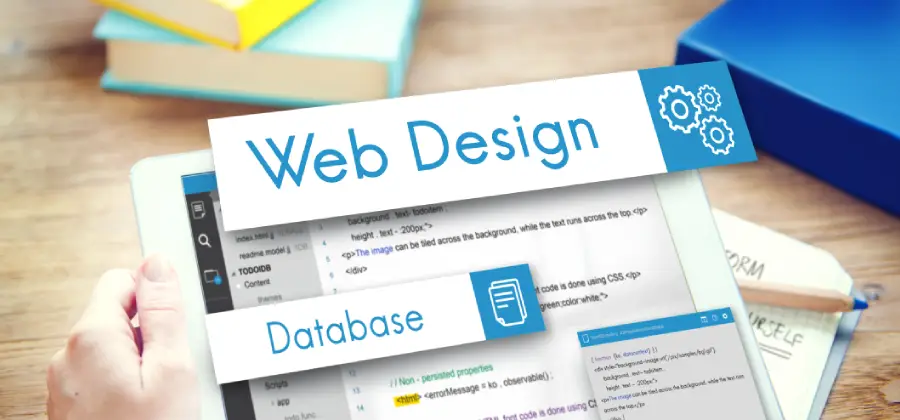
Transforming a vision into a tangible, functional website embodies the essence of the web page design and website design and development process. This journey from conceptualization to implementation is both an art and a science, demanding a blend of creativity, technical prowess, and relentless pursuit of perfection. Here, we unfold the critical steps of the design process and underscore the importance of feedback and iterative design for continuous improvement, ensuring every project not only meets but surpasses expectations.
Understanding the Vision
The genesis of any design project is rooted in understanding the vision, goals, and objectives. This initial stage involves in-depth discussions with stakeholders to capture the essence of what the website aims to achieve. Keyword research, including LSI keywords, is conducted to align the project with SEO best practices from the outset. It's here that the foundation is laid, shaping the direction and scope of the project.
Research and Exploration
With a clear vision in place, the next step dives into research and exploration. Designers immerse themselves in analyzing the target audience, market trends, and competitor websites. This phase is crucial for gathering insights that inform the design strategy, ensuring the final product resonates with users and stands out in the digital landscape.
Wireframing and Prototyping
Armed with research insights, designers begin to sketch wireframes, laying out the structural blueprint of the website. These wireframes evolve into prototypes - interactive models that simulate the user experience. Prototyping tools like Adobe XD or Sketch play pivotal roles here, allowing for rapid iteration and refinement. This stage is critical for visualizing the flow and functionality of the website, ensuring every element serves the user's journey.
Design Mockups
With the structure in place, designers craft high-fidelity mockups, bringing the visual elements to life. Colour schemes, typography, and imagery are meticulously selected to align with the brand's identity and the website's goals. Attention to detail is paramount, as these mockups represent the final look and feel of the website, serving as a reference for the development team.
Development and Implementation
As the design takes shape, developers step in to turn mockups into fully functional websites. Using languages like HTML, CSS, and JavaScript, alongside frameworks and content management systems, they ensure the design is responsive, accessible, and optimized for performance. Collaboration between designers and developers is key, ensuring the integrity of the design is maintained throughout the development process.
Feedback and Iterative Design
Perhaps the most crucial phase of the design process is the iterative cycle of feedback and refinement. Launching a beta version allows for real-user testing, garnering insights into usability, functionality, and overall experience. Stakeholder and user feedback are invaluable, guiding further refinements to the design. This iterative process is ongoing, embracing a philosophy of continuous improvement to adapt to user needs and technological advancements.
Tools of the Trade: Design Resources for Optimization
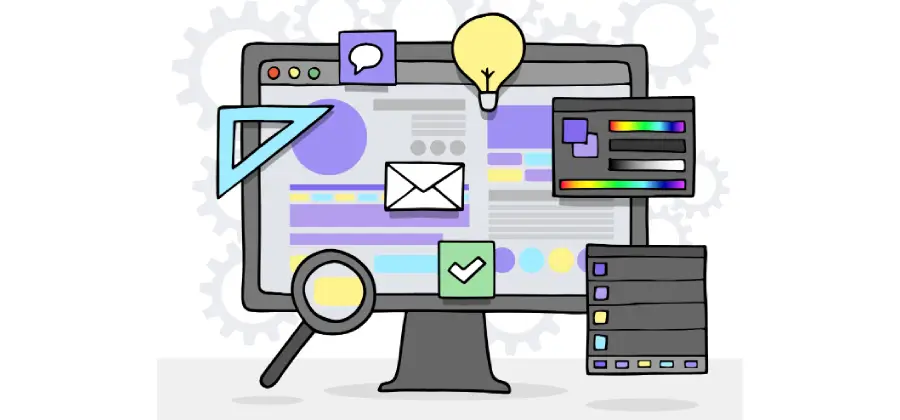
In the ever-evolving landscape of web page design and website design and development, the right set of tools can significantly streamline the design and development process, fostering collaboration and enhancing productivity. As we delve into the digital artisan's toolkit, it's crucial to spotlight software and resources designed to bridge the gap between vision and reality. These tools not only facilitate seamless collaboration between designers and developers but also empower users to elevate their projects with a touch of professionalism and efficiency.
Collaborative Design and Development Tools
1. Figma: A game-changer in the world of design, Figma stands out for its cloud-based approach, enabling real-time collaboration across teams. Its intuitive interface and vector graphics editor simplify the creation of responsive designs, making it an indispensable tool for web page design. Figma's interactive prototypes and design systems promote consistency and speed up the handoff from design to development, ensuring every project is on the same page.
2. Adobe XD: Adobe XD is a powerful tool for designing high-fidelity prototypes, wireframes, and mockups. With features like co-editing, document history, and voice prototyping, XD makes collaboration effortless, allowing teams to share feedback directly on designs. Its integration with other Adobe Creative Cloud apps further streamlines the workflow, providing a comprehensive suite for digital design projects.
3. GitHub: Beyond its core as a code hosting platform, GitHub fosters collaboration among developers working on website development. Its version control capabilities are crucial for tracking changes and managing project iterations. GitHub's issue-tracking and project management features ensure that teams can stay organized and focused on their development milestones.
Interactive Elements and Tools for Project Enhancement
4. Google Web Designer: Google Web Designer offers a free, robust environment for designing interactive HTML5 content. Its visual interface caters to both novices and experts, allowing the creation of engaging, animated elements without deep coding knowledge. This tool is particularly useful for adding interactive ads or animated features to web projects, enhancing user engagement and dwell time.
5. Canva: Canva democratizes design with its user-friendly platform for creating stunning visual content. From social media graphics to full web layouts, Canva’s drag-and-drop interface and extensive library of templates make it accessible for anyone looking to spruce up their web page design. Its collaboration features also allow teams to work together on designs, ensuring brand consistency across all digital assets.
6. Hotjar: Understanding how users interact with your website is crucial for optimization. Hotjar provides heatmaps, session recordings, and user feedback tools, offering invaluable insights into user behaviour. By highlighting areas of your site that attract the most attention or could use improvement, Hotjar empowers designers and developers to make data-driven decisions that enhance the user experience.
Conclusion
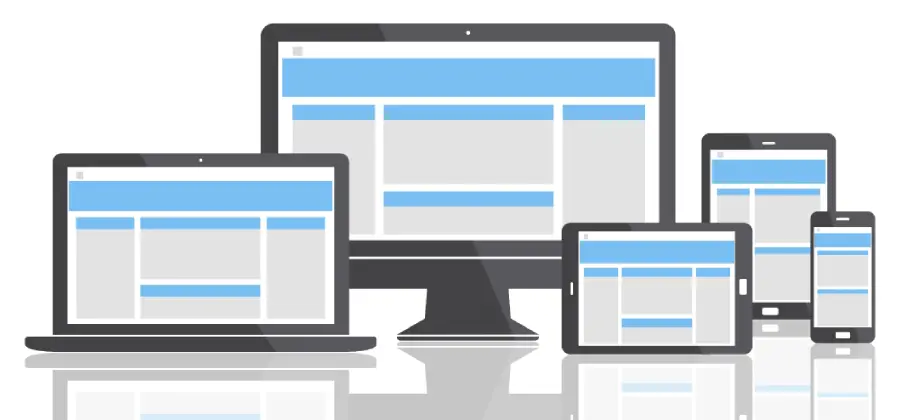
As we've journeyed through the intricate landscape of web page design and website design and development, one truth has emerged with crystal clarity: designers are the unsung heroes behind the scenes, shaping digital experiences that captivate, engage, and convert. Their role transcends mere aesthetics, delving into the realm of functionality, usability, and user satisfaction. Designers do not just paint a pretty picture; they craft the user's journey from the first click to the final action, ensuring every step is intuitive, accessible, and enjoyable.
The convergence of art and science in web page design highlights the designer's dual mandate: to create visually appealing sites that also perform flawlessly under the hood. This balance is crucial in today's digital era, where user expectations are ever-evolving, and competition is fierce. Designers stand at the forefront of innovation, blending creativity with technical acumen to deliver websites that not only meet but exceed these expectations.
Now, the call to action for businesses, developers, and content creators alike is clear: embrace the potential of design in your digital projects. Whether you're launching a new site, revamping an existing one, or seeking to improve user engagement, the principles of effective design are your blueprint for success. It's time to invest in design, not just as an aesthetic consideration but as a strategic imperative for website success.
Let this exploration serve as your inspiration to prioritize design in your web page design and website design and development efforts. Collaborate with designers, leverage cutting-edge tools, and adopt a user-centred approach to your projects. The impact of such endeavours extends far beyond the screen, driving brand loyalty, user satisfaction, and ultimately, business growth.